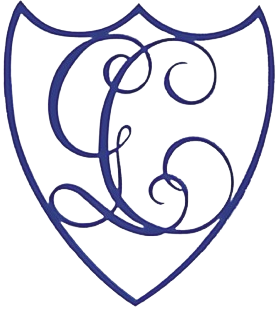

Days of week: Every Day
Departure time: 10.00
Departure point: from Lucca (to be defined)
Return: 18.00 (approximate time)
Minimum number of participants: 6
Individual Participation Fee: 75,00 €
When the 10 participants reach the individual fee: 65,00 €
The feee includes: guided tour for the whole day (entrances excluded), 1 glass of wine from the territory at the end of the tour, assistance ns. agency.
Optional visits: if you wish, you can add to the itinerary one of these paid tours:
Pfanner Palace and Gardens www.palazzopfanner.it
Giacomo Puccini Christmas House www.puccinimuseum.org/en/
(you can only access with groups up to 25 pax)
N.B. The order of the visit of the monuments will be at discretion of the guide according to the logistic needs of the group, the place of beginning and end of the itinerary.
ITINERARY
Let's start: In the morning we can take a nice walk on the most beautiful part of the Renaissance walls, from which to admire the city from above. Here are some historical indications. Renaissance wall section: they are the largest example in Europe of walls built according to the principles of modern fortification that have been preserved completely intact in a large city. The current wall is exactly 4 kilometres and 195 metres long.
The Cathedral: Continue with the visit of the Cathedral of San Martino: it received the title of cathedral church in the eighth century, and there were placed the relics of San Regolo. Then rebuilt and solemnly consecrated in 1070. The church, today presents itself with a facade in Roman style of Pisa, made by Guidetto da Como (1204). The interior is in late Gothic style and there is the temple of the Holy Face, a place for pilgrims on the route of the Via Francigena.
Napoleone Square and the Doge's Palace: We continue towards Piazza Napoleone and Palazzo Ducale: (external view) In this area was built the vast Fortezza Augusta, residence of Castruccio Castracani where he also found his palace built on a design by Giotto. The square was founded in 1806 during the Napoleonic domination of the Principality of Lucca by Elisa Bonaparte Baciocchi (from 1805 until 1815), sister of the emperor Napoleon.
San Michele Square: Finally we head to the heart of the city, Piazza San Michele. It corresponds to the ancient forum of the Roman city, and is tangent to the decumano. Until 1370, Piazza S. Michele was the seat of the Council Maggiore, the city’s legislative body. The square is surrounded by medieval buildings easily recognizable by the architecture with arches or pointed arches, brick walls and windows.
Church of San Michele: it is located in the homonymous square. The church was first documented in 795 with the name foro, but the current church was erected from 1070 by order of Pope Alexander II and the result is that of a basilica in Gothic style with Romanesque motifs. It has a very high facade, enriched by inlays and sculptures, many of which were restored during the nineteenth century. It is decorated with four rows of lodges where stands the large marble statue of the archangel Michael.
Home of Giacomo Puccini: We conclude the morning visit with Piazza Cittadella and the Birthplace of Giacomo Puccini that we can see outside, or if you want to enter to visit the long birth of the great composer and know more about his youth period, the one that has tied him forever to the city of Lucca.
Guinigi Tower: In the afternoon, we can start again from Piazza di San Michele to explore the northern area of the city. We will then go, through the medieval streets, towards Palazzo Guinigi to admire the Torre Guingi. We can limit ourselves to appreciating it from below, or, reach the top by climbing the 230 steps. The tower is built of stone and brick, it is one of the most representative monuments of Lucca; its main feature is the presence of some holm oaks on its summit. It belonged to the Guinigi family, now masters of the city with the coup d'état of Paolo in 1430.
Amphitheatre Square and San Frediano: We continue towards Piazza dell’Anfiteatro. Built on the remains of the ancient Roman amphitheatre dating back to the 1st/2nd century AD, of which there are some remains of arches on the outside, visible along Via dell’Anfiteatro. In the Middle Ages, what remained after the barbarian invasions was covered by buildings. Only in the 19th century, thanks to the work of the architect Lorenzo Nottolini, was the space of the arena freed from the small buildings that crowded it and the “via dell’anfiteatro” was opened, which follows its elliptical profile on the outside. The new urban space was used for the city market (food market). Nearby, we find the Basilica of San Frediano: built in the 6th century by Bishop Frediano and dedicated to the three holy deacons: Vincenzo, Stefano and Lorenzo.
Pfanner Palace: Finally, we will climb up the walls again to admire the beautiful garden of Palazzo Pfanner from above and, if you want, we can enter to visit the noble apartment and the eighteenth-century garden.
Tasting Lucca: At the end of the visit, stop in a characteristic wine shop to taste a delicious local wine (1 glass included).
Technical organisation: Gems in Tuscany tour operator